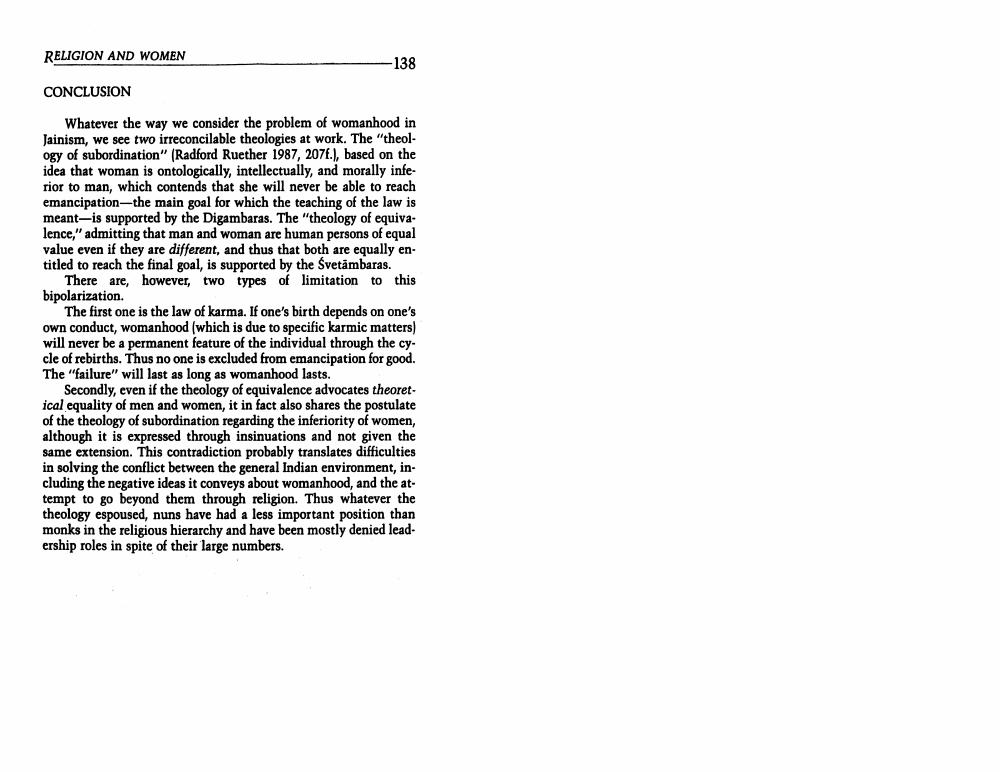________________
RELIGION AND WOMEN
138
CONCLUSION
Whatever the way we consider the problem of womanhood in Jainism, we see two irreconcilable theologies at work. The "theology of subordination" (Radford Ruether 1987, 207f.), based on the idea that woman is ontologically, intellectually, and morally inferior to man, which contends that she will never be able to reach emancipation-the main goal for which the teaching of the law is meant-is supported by the Digambaras. The "theology of equivalence," admitting that man and woman are human persons of equal value even if they are different, and thus that both are equally entitled to reach the final goal, is supported by the Svetambaras.
There are, however, two types of limitation to this bipolarization.
The first one is the law of karma. If one's birth depends on one's own conduct, womanhood (which is due to specific karmic matters) will never be a permanent feature of the individual through the cy. cle of rebirths. Thus no one is excluded from emancipation for good. The "failure" will last as long as womanhood lasts.
Secondly, even if the theology of equivalence advocates theoretical equality of men and women, it in fact also shares the postulate of the theology of subordination regarding the inferiority of women, although it is expressed through insinuations and not given the same extension. This contradiction probably translates difficulties in solving the conflict between the general Indian environment, including the negative ideas it conveys about womanhood, and the at. tempt to go beyond them through religion. Thus whatever the theology espoused, nuns have had a less important position than monks in the religious hierarchy and have been mostly denied lead. ership roles in spite of their large numbers.




